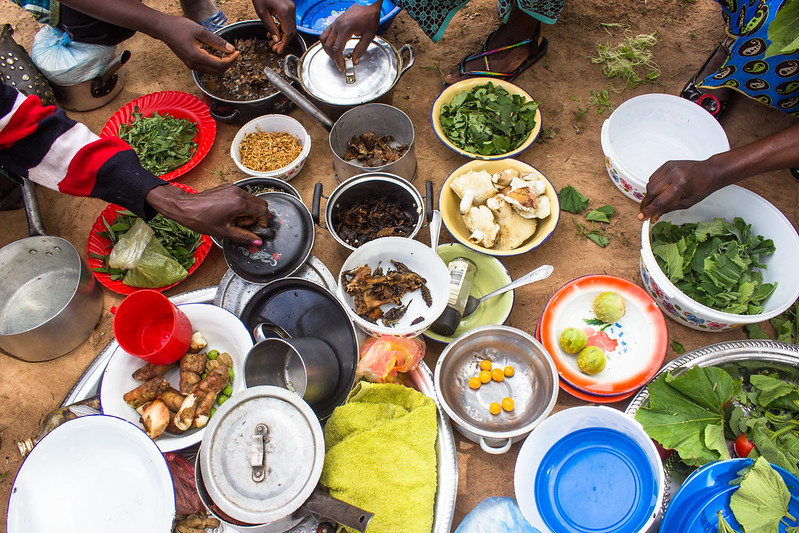Healthy diets are essential for achieving Sustainable Development Goal (SDG) 2 and play a critical role in advancing many other SDGs. Yet, despite their importance, diet quality is not explicitly captured by any current SDG indicator. So far, global efforts to monitor hunger and food insecurity rely on the Prevalence of Undernourishment (PoU) and the Food Insecurity Experience Scale (FIES). Nutritional status is assessed through indicators such as child stunting, wasting, overweight, and anaemia in women.
However, these measures alone do not reflect whether people have access to or consume diverse, nutrient-rich diets. Poor diet quality is now the leading cause of poor health and non-communicable diseases worldwide.
Recognizing this gap, the introduction of a new SDG indicator on Minimum Dietary Diversity (MDD) is a crucial step toward better tracking and promoting diet quality globally.
The complexity of measuring the quality of diets
In a significant development for global nutrition efforts, the Food and Agriculture Organization of the United Nations (FAO) and the United Nations Children’s Fund (UNICEF) have taken joint custodianship of a groundbreaking new indicator regarding MDD. Officially adopted by the United Nations Statistical Commission at its 56th session, this initiative will transform how we measure and address malnutrition, a critical challenge that hinders progress toward achieving Sustainable Development Goal 2 (Zero Hunger) and the broader 2030 Agenda.
For years, tracking malnutrition has been a complex challenge, often focused primarily on food availability rather than the quality of diets. The introduction of the MDD indicator fills a crucial gap, emphasizing the importance of dietary diversity as a key determinant of nutritional well-being. By measuring dietary diversity for children (MDD-C) and women of reproductive age (MDD-W), this new indicator helps ensure that efforts to combat malnutrition consider the variety of foods consumed.
The hunger gender gap
According to the 2024 State of Food Security and Nutrition report, between 713 and 757 million people experienced hunger in 2023—equivalent to one in every 11 people worldwide. The crisis is even more severe in Africa, affecting one in five individuals. Beyond hunger, 2.33 billion people faced moderate or severe food insecurity, and over 3.1 billion could not afford a healthy diet.
EAT ADDIS, a five-year interdisciplinary research project in Addis Ababa, is a case study highlighting the urgency of improved dietary monitoring. The findings revealed alarming trends, including persistent child stunting, poor maternal nutrition, and an unexpected rise in overweight cases among women. These inequalities underscore the broader challenge of gender inequality in food security, as highlighted in the Gender Snapshot 2023 report. By 2030, if current trends continue, over 340 million women and girls will still live in extreme poverty, with 236 million projected to face food insecurity—far more than their male counterparts.
Addressing gender gaps in agri-food systems could reduce food insecurity and boost global GDP by nearly $1 trillion. The MDD-W indicator now provides a crucial evidence-based tool to formulate strategies that enhance nutrition, improve health outcomes, and drive progress toward SDG 2: Zero Hunger.
To combat these challenges, adopting the Minimum Dietary Diversity for Women (MDD-W) indicator into the Sustainable Development Goals (SDGs) framework marks a significant step forward and goes beyond food availability to understand actual consumption patterns.
Leveraging a data-driven approach
The MDD indicator is a critical complement to existing food security and nutrition metrics, enhancing our ability to paint a comprehensive picture of dietary quality globally. Studies consistently show that diets lacking diversity increase the risk of micronutrient deficiencies, particularly among vulnerable populations like children and women. By adopting a simple yes/no measure—whether women aged 15 to 49 have consumed at least five out of ten defined food groups in the past 24 hours—the MDD-W indicator can be easily used by governments, policymakers, and organizations to assess dietary diversity at the population levely, evaluate programme impacts, and inform policymaking.
The 10 food groups are grains, white roots and tubers, and plantains; pulses (beans, peas and lentils); nuts and seeds; milk and milk products; meat, poultry and fish; eggs; dark green leafy vegetables; other vitamin A-rich fruits and vegetables; other vegetables; and fruits.
This initiative is a vital policymaking tool for countries striving to achieve SDG 2. The MDD indicator not only allows for better-targeted interventions but also elevates the critical importance of food systems transformation in post-SDG monitoring.
Next steps to improve diet quality
To truly address the complexities of malnutrition, a multifaceted strategy must be developed that includes improving access to a wider range of nutritious foods. The MDD indicator is a significant step in ensuring that dietary diversity is placed at the forefront of discussions and actions to eradicate hunger and malnutrition.
As we move forward in our collective efforts to realize the 2030 Agenda, the successful implementation and monitoring of the MMD indicator will provide invaluable insights into dietary habits, facilitate targeted interventions, and boost our commitment to a world where everyone has access to healthy, nutrient-rich foods.
